Backroads of Iberia: Spanish Paradores & Portuguese Pousadas
September 30 - October 16, 2018
Part Two: Spain, Page One - Merida, Carmona, Seville
Spain is mostly located on the Iberian Peninsula and is the second
largest
country in the European Union. State education in Spain
is free and compulsory from the age of six to sixteen.
The health care system of Spain is considered one of the best
in the world, in 7th position in the ranking established by
the World Health Organization. Healthcare is public, universal
and
free for any legal citizen of Spain.
Modern humans arrived in the Peninsula about 35,000 years ago.
It came under Roman rule around 200 BC.
At the end of the western Roman Empire, Germanic tribal
confederations migrated from central Europe, invaded
the peninsula, and established relatively independent realms.
Eventually the Visigoths forcibly integrated these independent
territories in the peninsula into the Kingdom of Toledo.
In the early 8th century, the Visigothic Kingdom fell to the Moors.
Following the Moorish conquest, Europeans began a
gradual process of retaking the region known as the Reconquista,
which by the late 15th century (1492) culminated in the emergence
of Spain as a unified country under Catholic Monarchs.
That same year, Spain’s Jews were ordered to convert to Catholicism
or face expulsion from Spanish territories during the Spanish
Inquisition. The Treaty of Granada guaranteed religious
tolerance toward Muslims for a few years before Islam
was outlawed and a large proportion of Spain’s Muslim
population was expelled, settling primarily in north Africa. In the
early modern period, Spain became the world’s first global empire.
The Napoleonic invasions of Spain led to chaos and triggered
independence movements leaving the country politically unstable.
The Spanish Civil War started in 1936.
For 3 years Nationalist forces led by General Francisco Franco and
supported by Nazi Germany and Fascist Italy fought the Republican side,
supported by the Soviet Union and Mexico but not supported by the Western powers
due to the British led policy of non-intervention. Atrocities were committed
by both sides. Many citizens left the country. In 1939, Franco emerged
victorious and became a dictator. Under Franco, Spain was neutral
during WWII but sympathetic to the Axis. His regime emphasized a form
of fascism that stressed anti-communism, nationalism, and Roman Catholicism.
After World War II, Spain was politically and economically isolated,
and was kept out of the United Nations. This changed in 1955, during the
Cold War, when it became strategically important for the US to
establish a military presence on the Iberian Peninsula as a counter
to any possible move by the Soviet Union into the Mediterranean area.
In the 1960s, Spain registered unprecedented economic growth.
With Franco’s death in 1975, Juan Carlos succeeded to the position of
King of Spain. With the public’s approval of the new Spanish Constitution
of 1978 and the restoration of democracy, Spain gave much
authority to the regions and created an internal structure based on
autonomous communities, but the Constitution does explicity state
the indivisible unity of the nation. All autonomous communities have
their own elected parliament. Spain has a parliamentary constitutional
monarchy with a prime minister. The monarch (currently King Felipe VI)
acts as a moderator rather than a source of executive authority.
The constitution also specifies that Spain has no state religion
and that all are free to practice and believe as they wish.
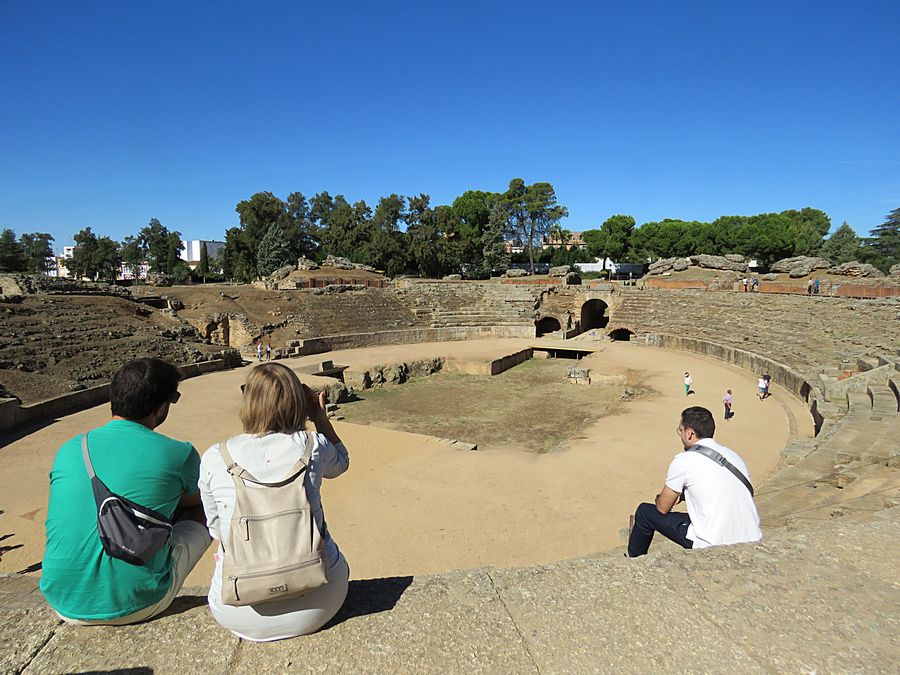
From Lisbon, we drove through a farming region to the Spanish
province of Extremadura, which once marked the boundary
between Moorish and Christian Spain. The capital of the region,
Merida, was under Moorish, Christian, and Portuguese control
in its history. Merida has some of the best preserved Roman
ruins in Europe. This photo shows the large Roman
amphitheater where gladiators once fought to the death
against animals imported from Asia and Africa.

The 6,000 seat ancient Roman theater in Merida.
The town was founded with the name of Emerita Augusta,
meaning the discharged soldiers of the army of Emperor Augustus,
who founded the city. The name Merida is an evolution of this.

A modern public square in Merida

A young girl that was playing in the square.
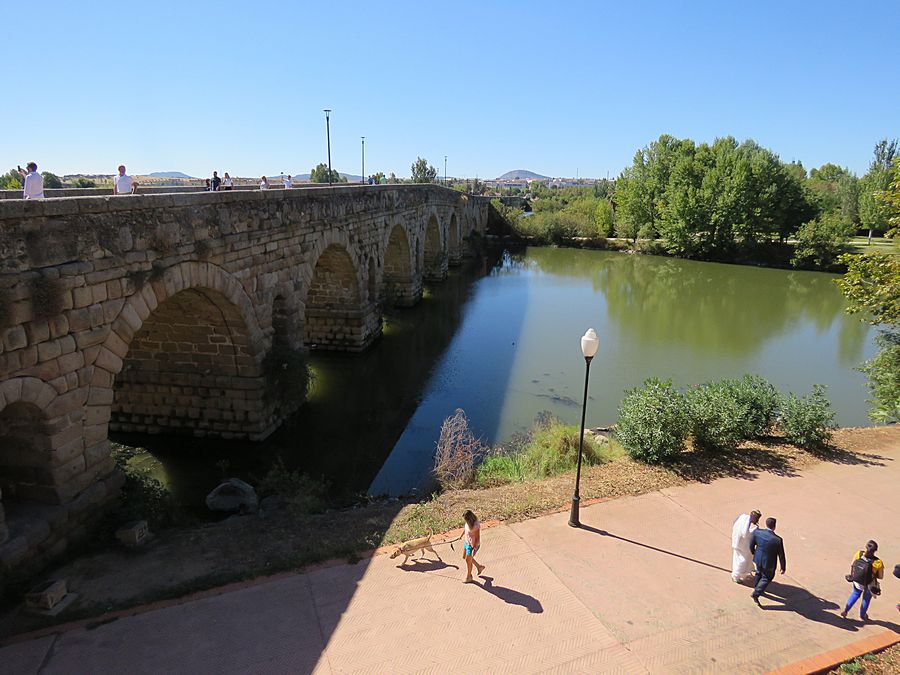
The Puente Romano, a bridge over the Guadiana River in
Merida that is still used by pedestrians. It is the longest of all
existing Roman bridges.
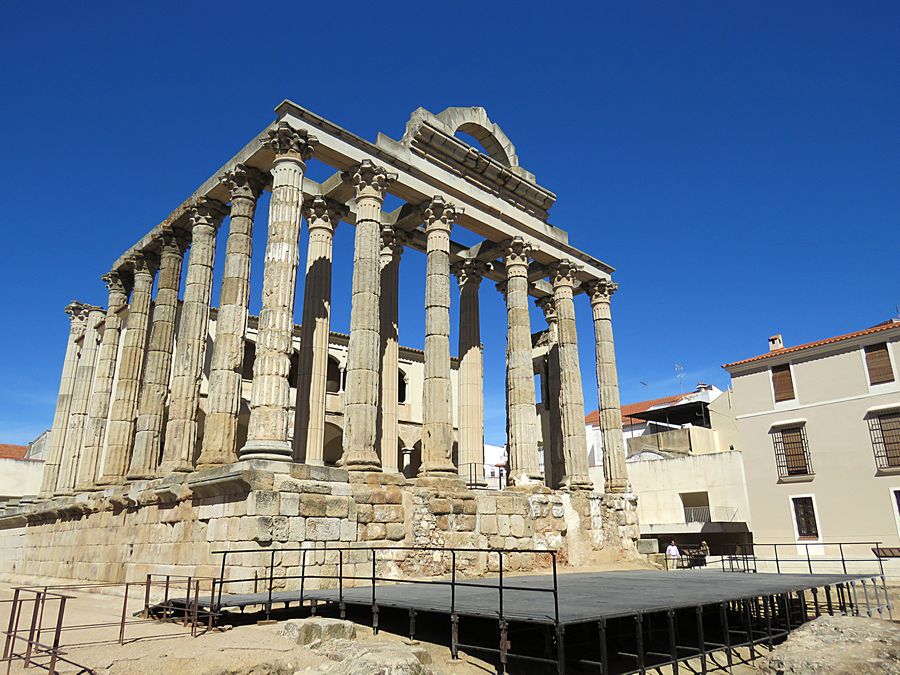
The ruins of the Temple of Diana in Merida
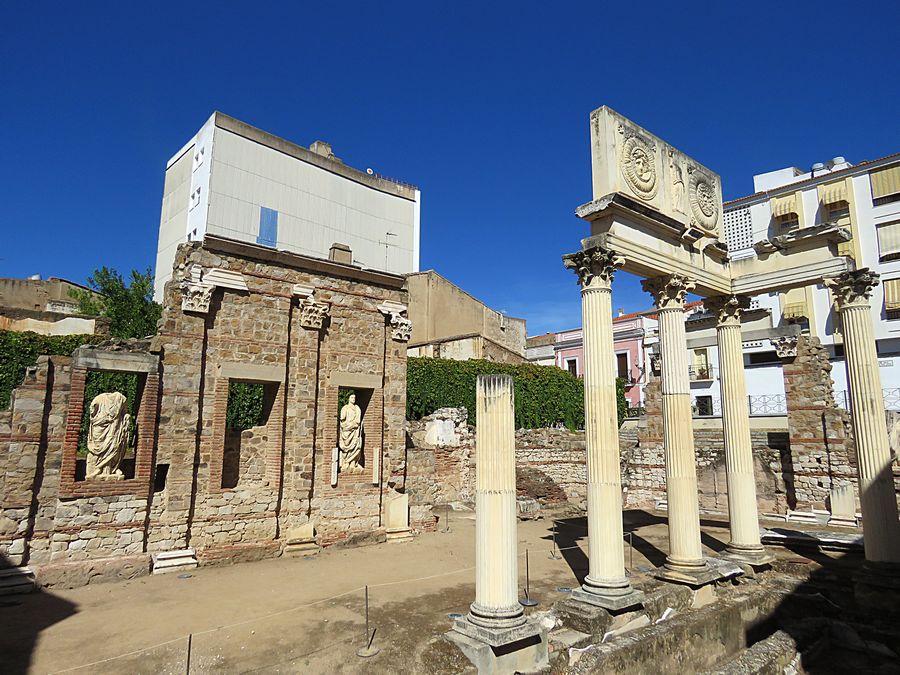
Remains of the Roman Forum surrounded by modern buildings.
It was the main public area of the Roman city Emerita Augusta.
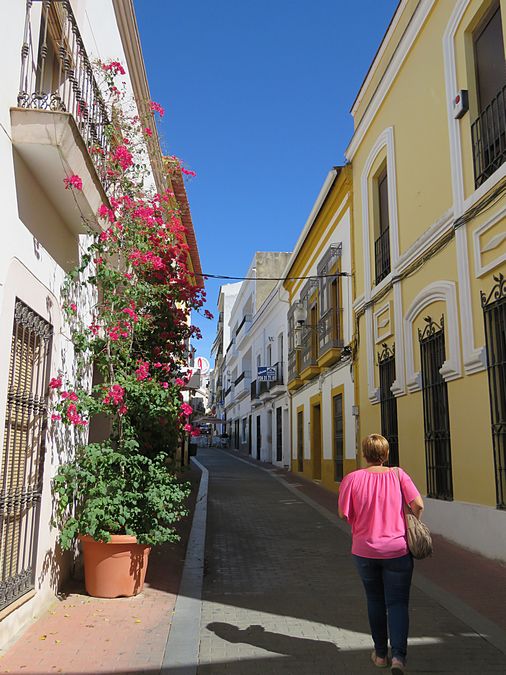
Typical narrow, cobblestoned street in Merida's old quarter.
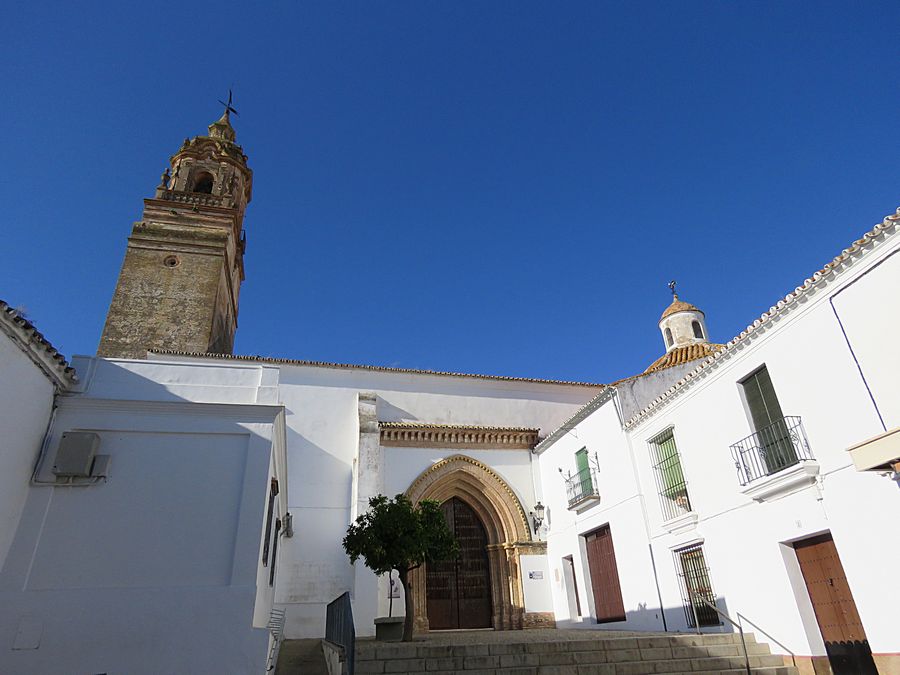
In Carmona, where we spent 3 nights.
Iglesia de San Bartolome (Church of San Bartolome) in
the historic
center of the City. Carmona
is in southwestern Spain. Its construction
dates back to the 15th century. With the arrival of Phoenician
traders
from the eastern Mediterranean, Carmona
was transformed into a city
and centuries later became a Roman stronghold.
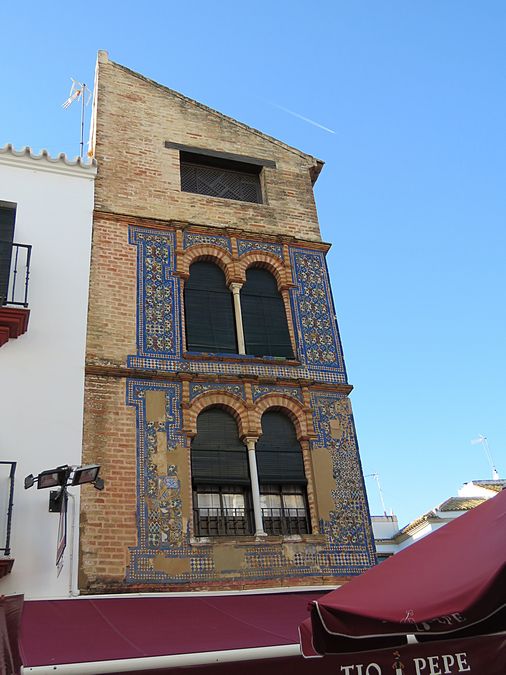
A building in Carmona with tile decoration, which is commonly
seen in
Spain. Carmona is said to be the oldest town in Spain
with a continuous
population base. It has been dominated
at various times by Phoenecian,
Germanic, Roman,
and Arab invaders. It is located high above fertile
surrounding plains.
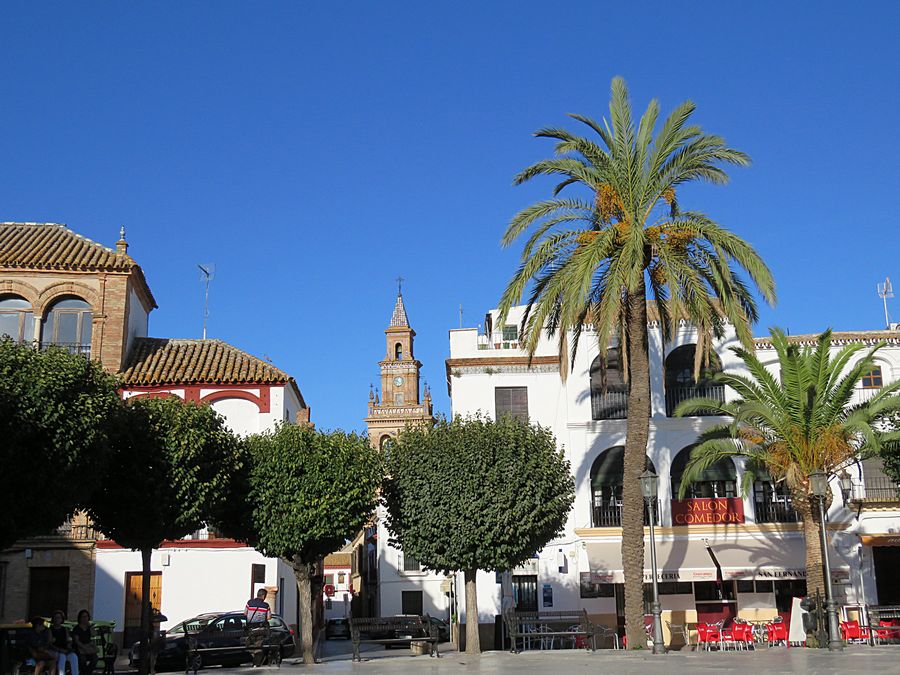
Iglesia de San Pedro or Church of San Pedro
in Carmona. Shown is the bell tower that
resembles the Giralda Tower in Seville (seen later).
This church was built in the
15th century and completed in the 18th century.
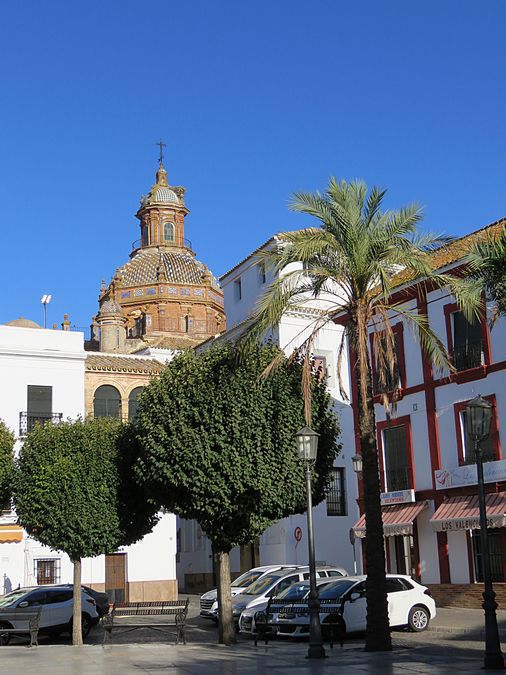
Another view of Church of San Pedro in Carmona
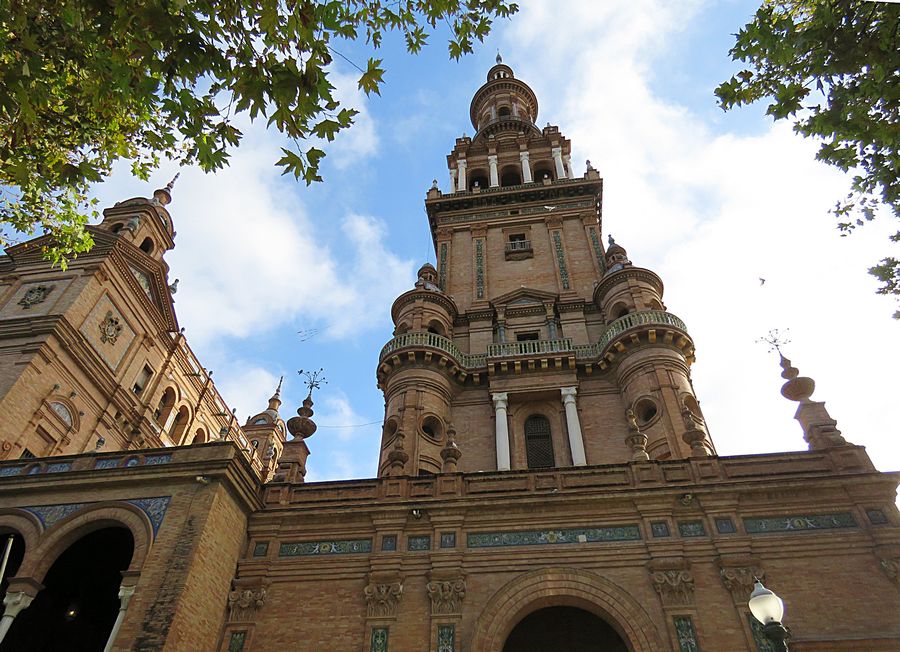
From Carmona, some of us took an optional tour to Seville.
This is part of the Plaza de Espana, Spain Plaza, in Seville.

Plaza de Espana in Seville, built in 1928 for the
Ibero-American Exposition of 1929.
The Plaza de Espana, showcased Spain's industry
and technology
exhibits.
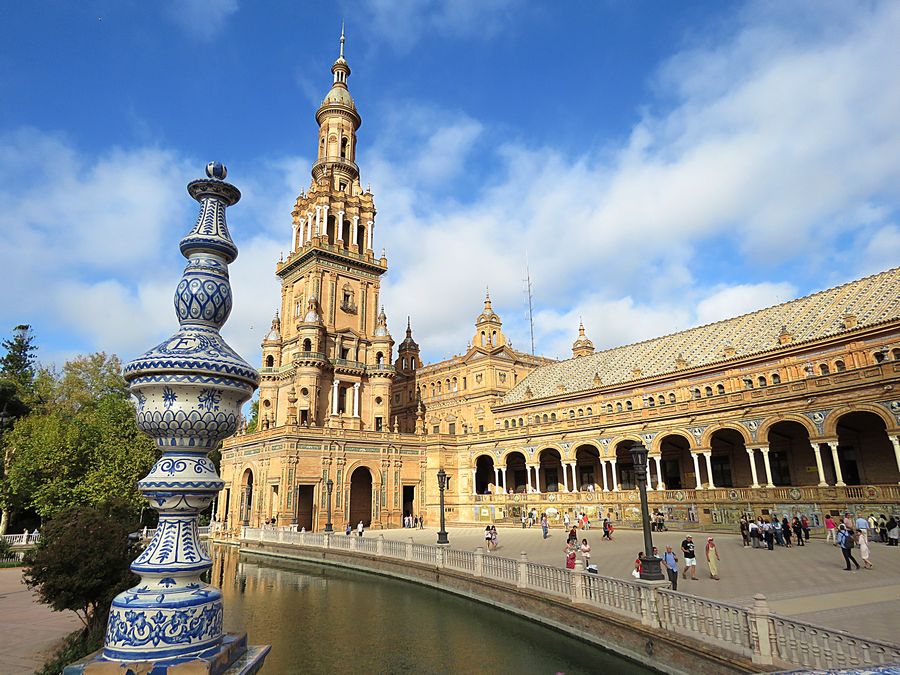
The Plaza de Espana complex is a huge half-circle with buildings
continually running around the edge, accessible over the moat
by numerous bridges representing the four ancient kingdoms
of Spain. By the walls of the Plaza are many tiled alcoves, each
representing a different province of Spain.
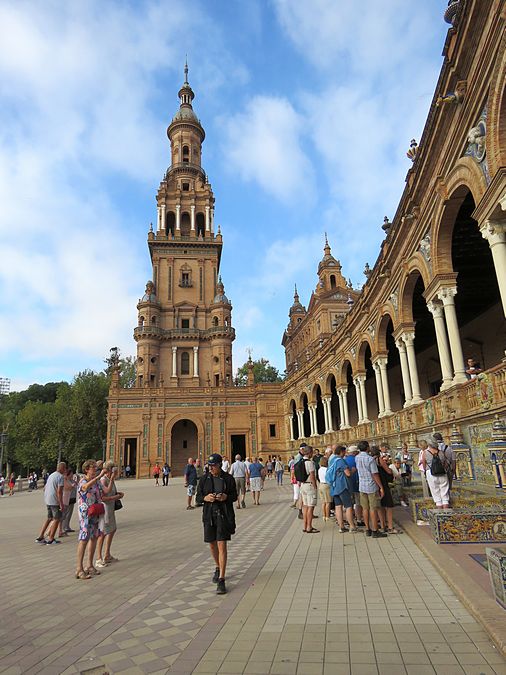
The plaza mixes elements of the Renaissance Revival and
Moorish Revival
styles of Spanish architecture.
Note the alcoves along the right
side of the photo.
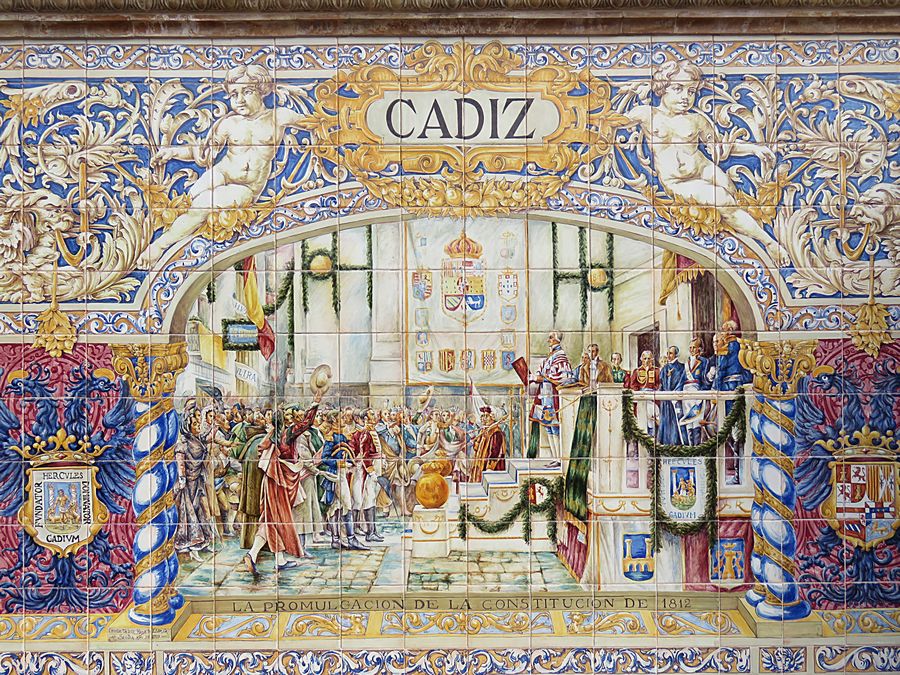
The Plaza's tiled Alcoves of the Provinces are often used as
backdrops for visitors' portrait photographs, taken in their own
home province's alcove. Province of Cadiz, one of eight which
make up the autonomous community of Andalusia.
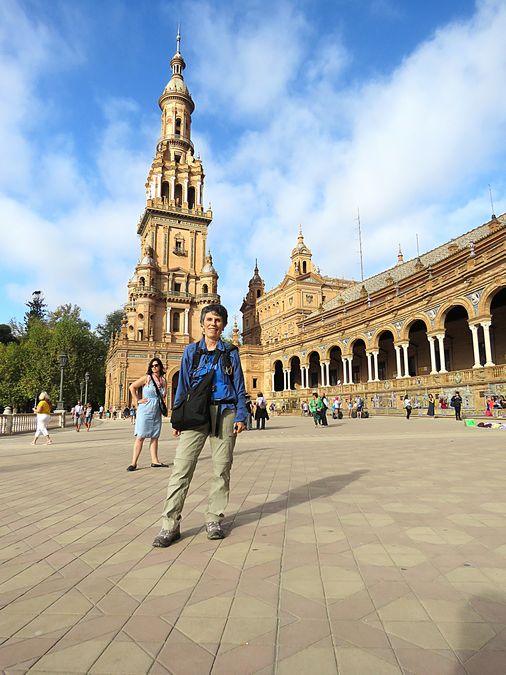
Pat at Spain Plaza
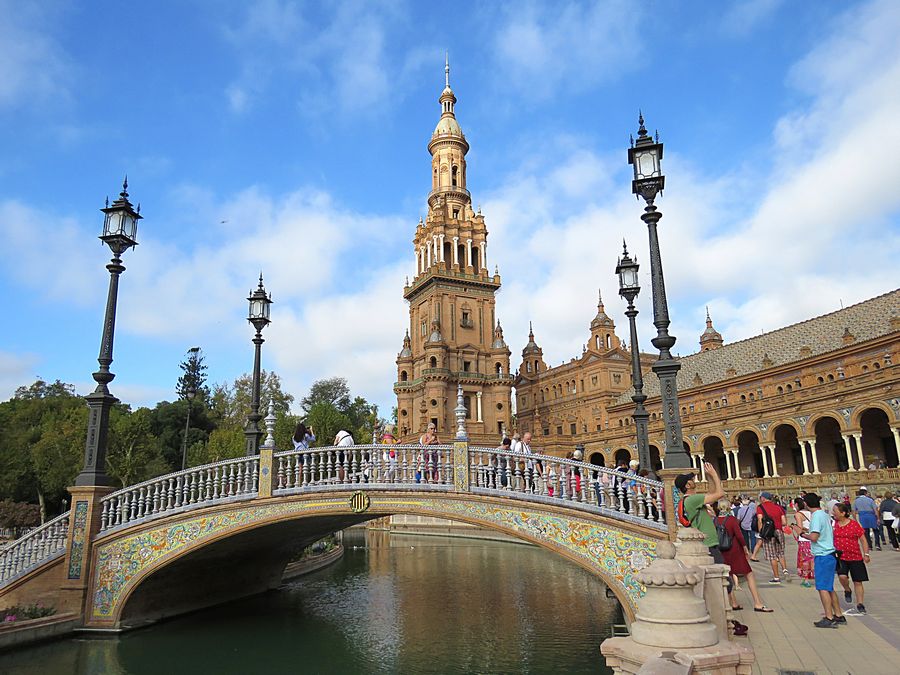
A view of the moat
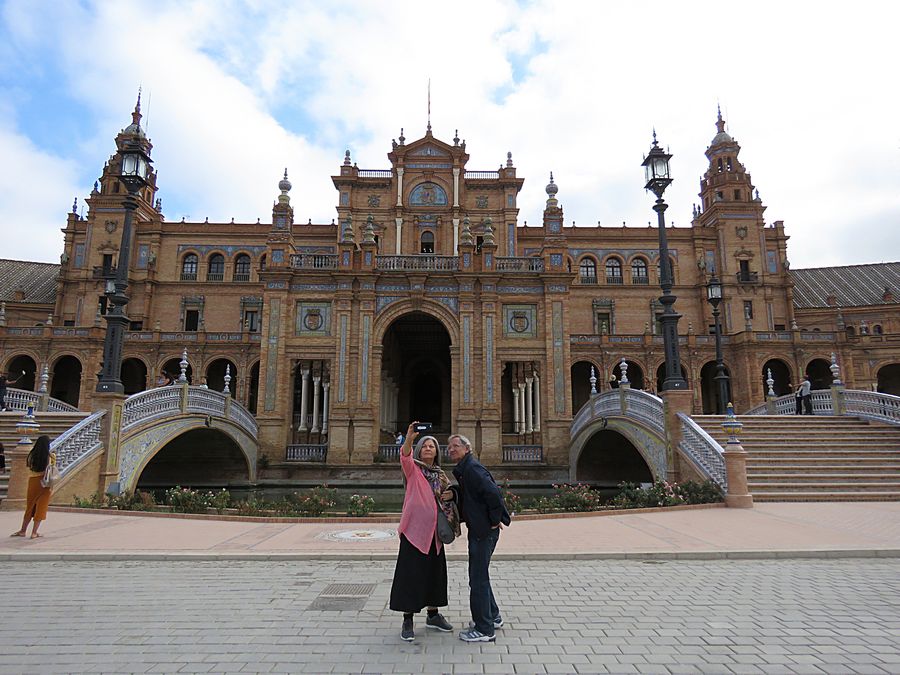
Today the Plaza de Espana mainly consists of Government
buildings. It has been used as a filming location for several
movies.
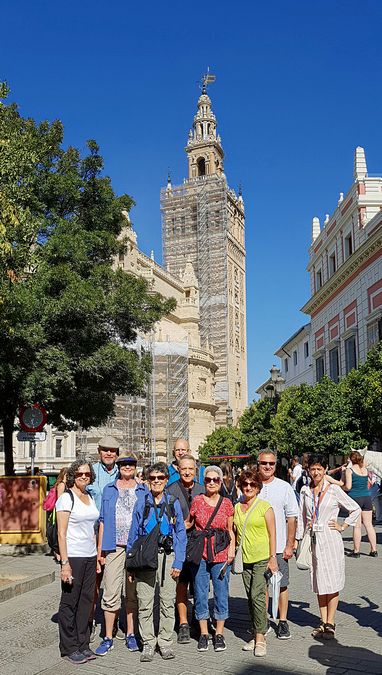
Some of the tour group standing near Seville
Cathedral with
the Giralda Tower
of the Cathedral in the background.

Partial view of Seville Cathedral, the third largest church in the
world and the largest Gothic church. Gothic architecture is a
style that flourished in Europe during the High and
Late Middle
Ages.
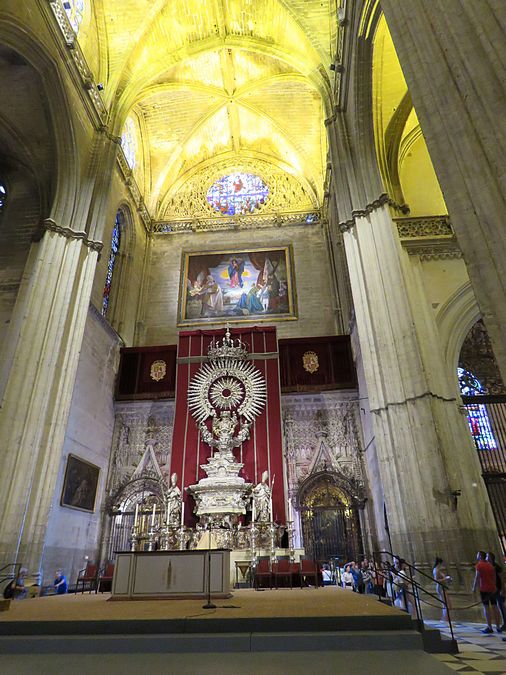
Inside the Cathedral
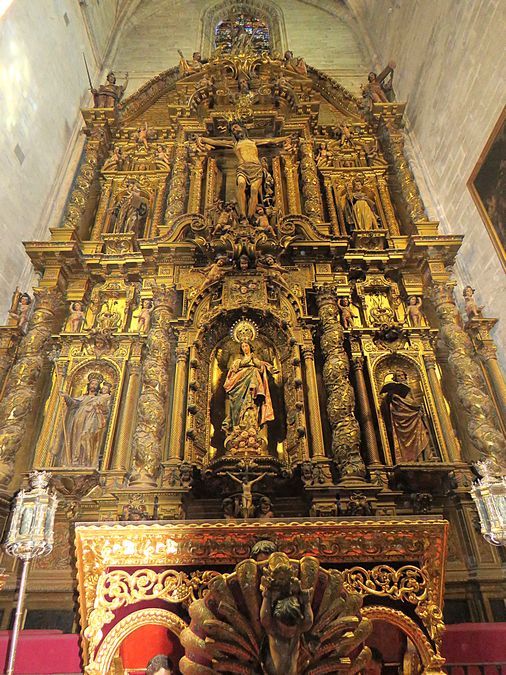
Inside the Cathedral
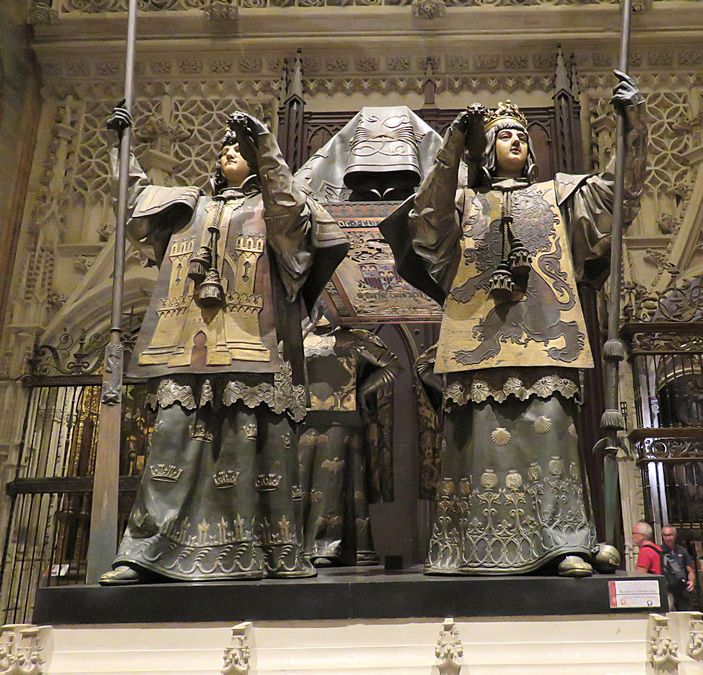
The tomb of Christopher Columbus
in the Seville Cathedral
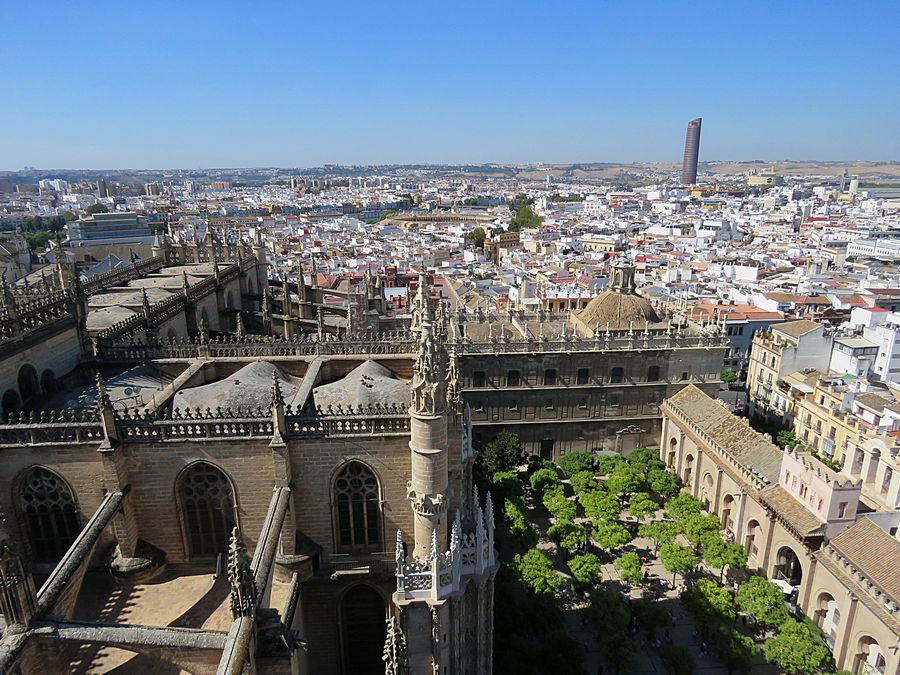
View of Seville from the Giralda,
the bell tower of Seville Cathedral
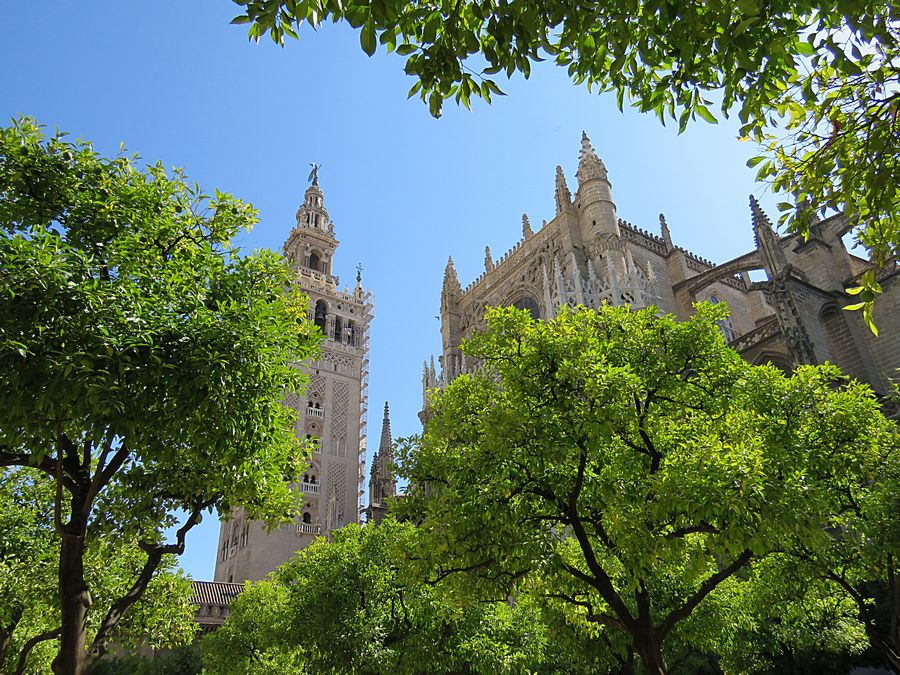
On the left, the Giralda, the bell tower of the Seville
Cathedral.
It was originally built as the minaret
for the Great Mosque of
Seville.
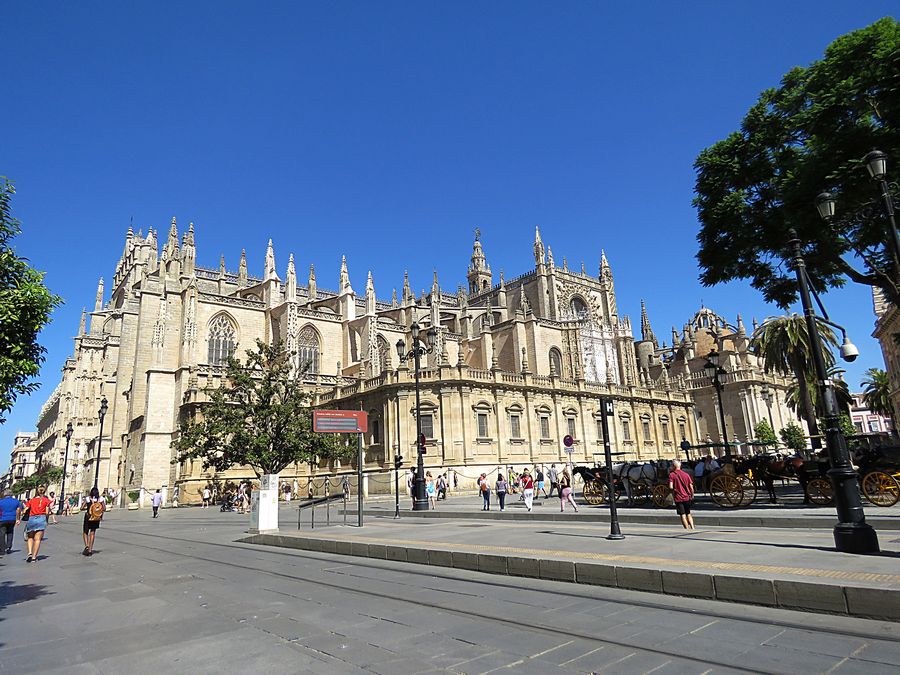
The Cathedral of Seville

Busy narrow street in Seville. The covers above the street are
to help create some shade and reduce the heat for pedestrians.
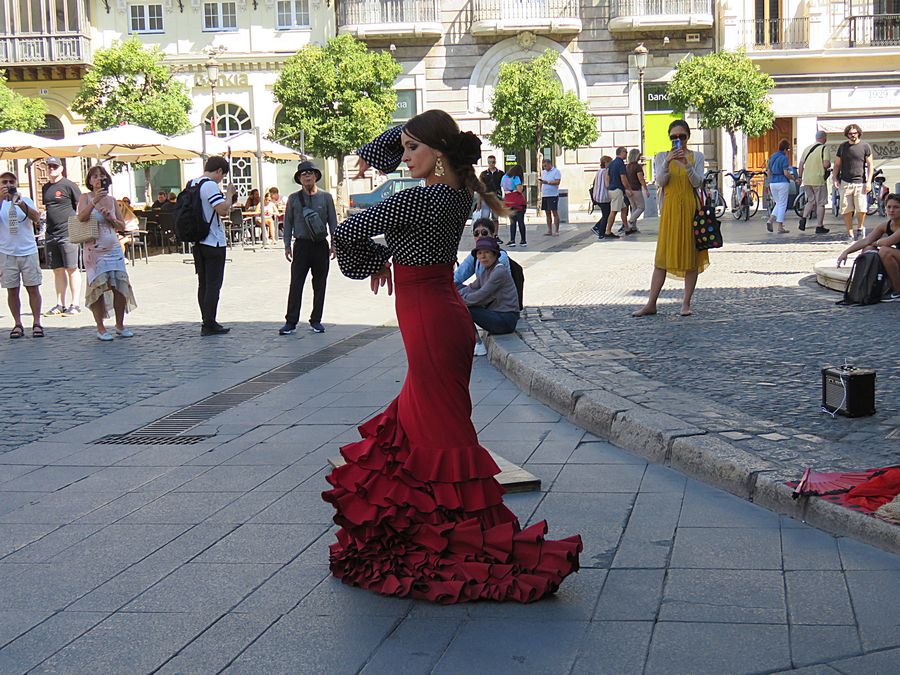
A flamenco dancer performing on a
street near the Cathedral.
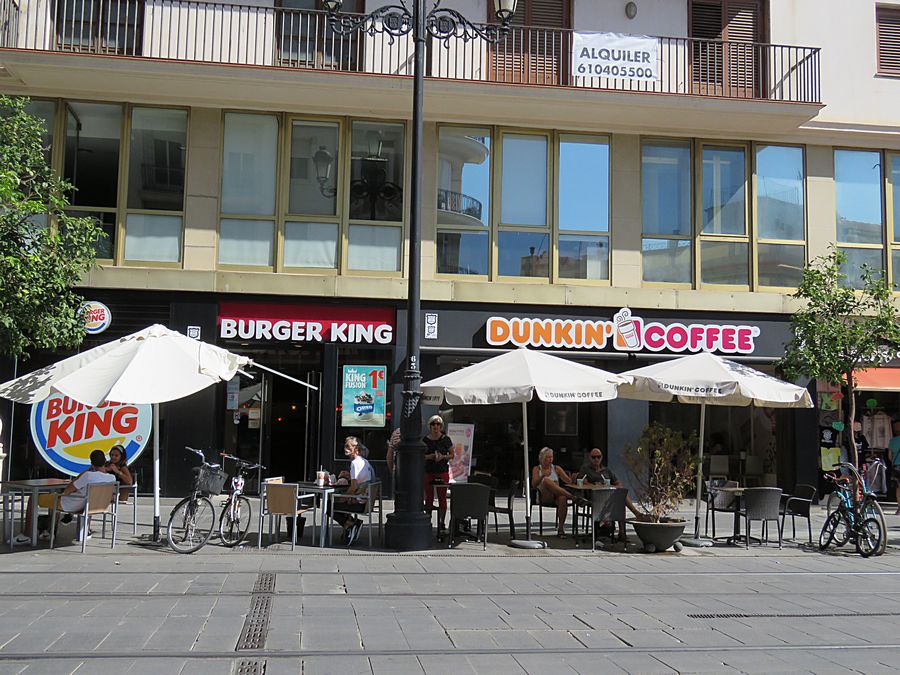
Two "historic" sites in the old section of Seville.
We saw these
restaurants and McDonalds
everywhere we went in Spain.
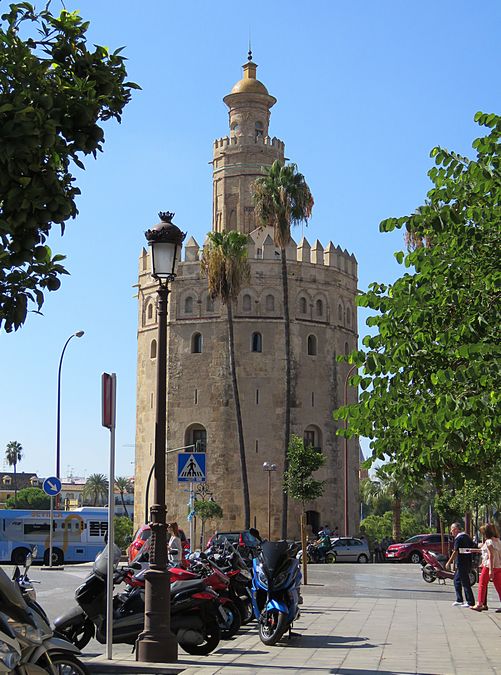
Torre del Oro - a military watch tower in Seville that was
erected by the Almohad Caliphate during Muslim rule to
control access
to Seville via the Guadalquivir River.

The bullring in Seville
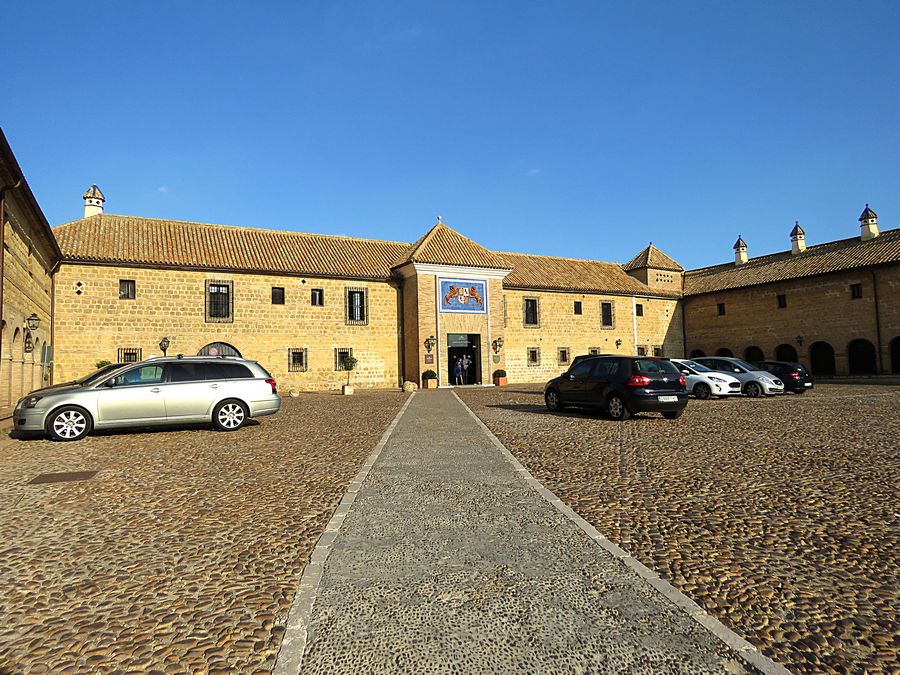
Back in Carmona at the Parador de Carmona, where we stayed.
The building is built over and next to the ruins of a
stunning fortress standing high above the town. The ruined
Alcazar on the southeastern edge of Carmona was an Almohad
(Muslim) fort that Pedro I turned into a country palace in the
13th century. It was brought down by earthquakes in 1504
and 1755, and its ruins now provide a memorable backdrop
to the luxurious Parador de Carmona hotel.
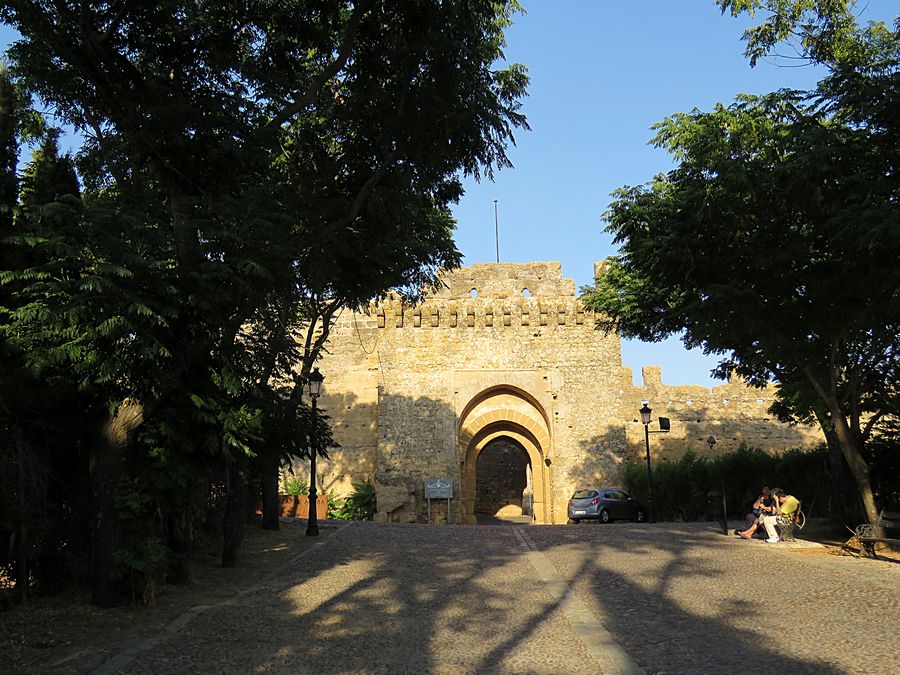
Part of the fortress ruins. Walking through the archway,
you see
the entrance to the Parador de Carmona.
A parador in Spain is a kind of
luxury hotel,
usually located in a converted historic building such
as a
monastery or castle.
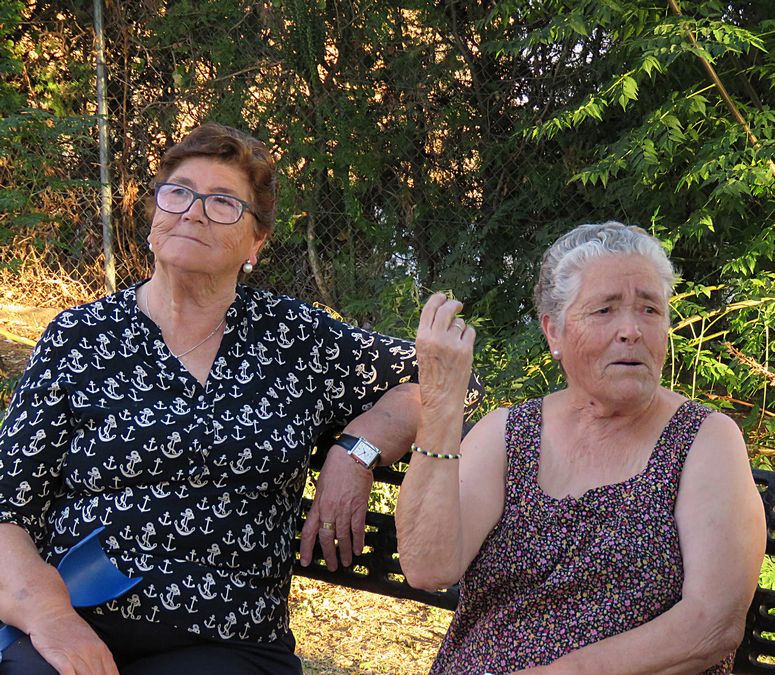
Two women relaxing on a bench near our Parador. They
were happy to talk to us (our guide translated). The woman on
the right gave us a condensed version of her life story, well
maybe not too condensed. Both were very expressive with
their hands.
Link to Part Two, Page Two - Ronda
Pat's Home Page